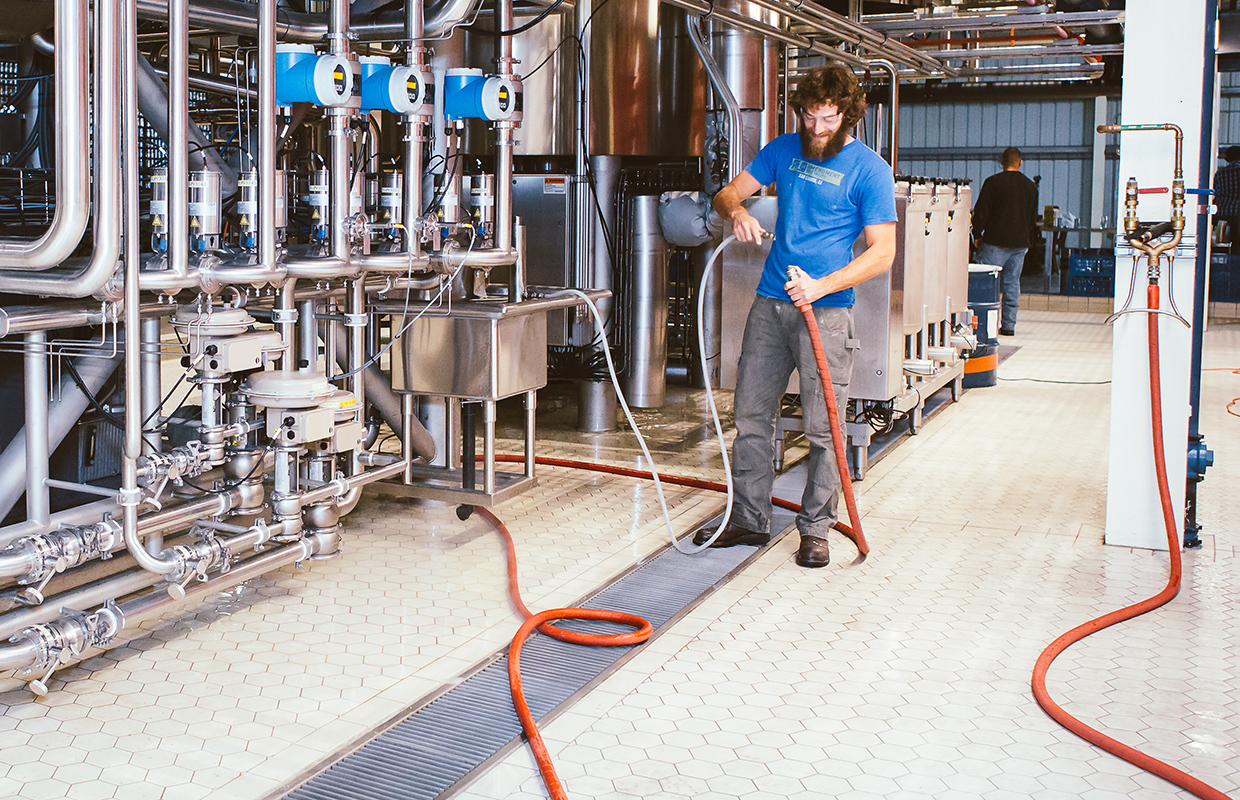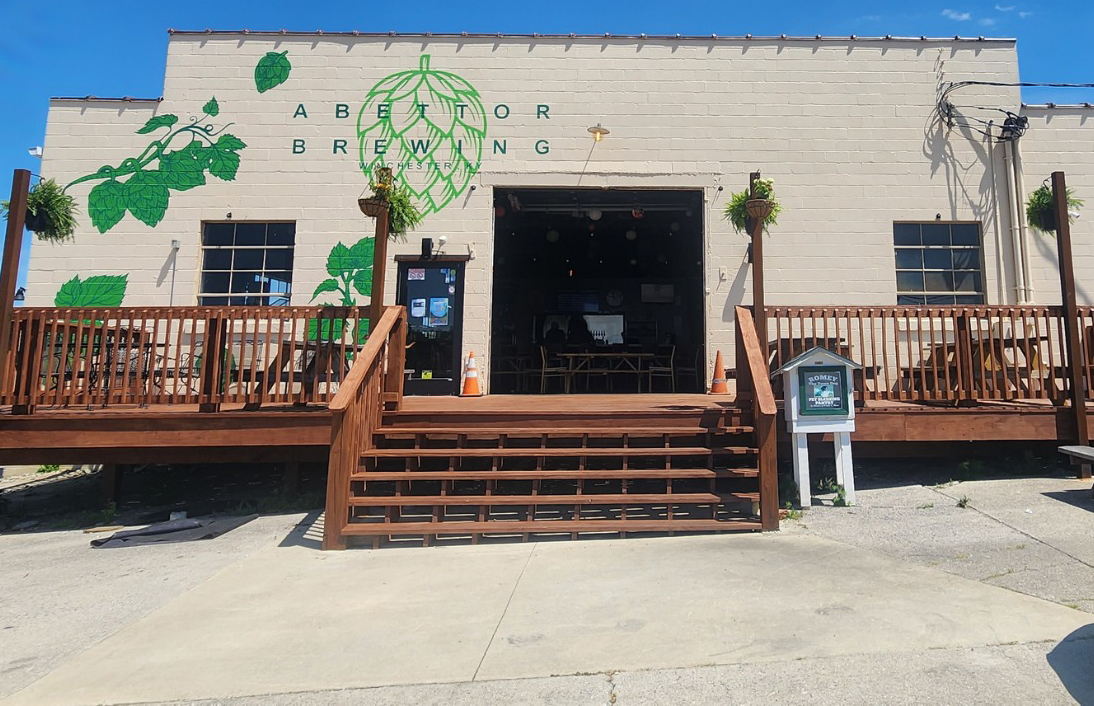
From “just a kiss” to a heavy-handed fruit-bomb, using fruit in beer is very commonplace and finding what works best for each batch through multiple trials has helped breweries find the most economical and practical ways to achieve the goals that launched from an idea.
When 21st Amendment Brewery first started using fruit in its beers in 2001 at its San Francisco pub with Hell or High Watermelon Wheat beer, Shaun O’Sullivan said they would take whole watermelons and scoop out the meat of the fruit, puree it, and then add into the brewing process.
“It was time consuming and sticky, but I love watermelon so I didn’t mind,” said the co-founder and Brewmaster. “The fruit would sometimes not be consistent so we shifted to using a concentrate which was stable and there is no flavor degradation in the beer when tested on our sensory panels.”
O’Sullivan said it’s interesting as far as aroma is concerned with consumer perception when it comes to fruit aroma versus flavor.
“What we think or smell in certain fruits isn’t always what the flavor or aroma might be from the actual fruit,” he said. “We pride ourselves in using real fruit, but have dabbled in using natural flavors to get more of a pop from the fruit and drive that overall sensory experience.“
O’Sullivan noted that concentrate is fresh fruit, with most of the water removed and a light amount of citric acid for shelf stability, keeping it all natural.
Ska Brewing favors fresh fruit or purees, but there are merits and limitations to those, along with concentrates as well.
“Fresh fruits and purees, while fantastic representations of ‘real‘ fruit flavors, can sometimes provide materials we don’t necessarily want in the beer — like pulp, pectin, and such,” said Steve Breezley, the COO for Ska.
“They also have high levels of fermentable sugars so they either need to be fully fermented, or pasteurized in order to be stable in the package. Because of this, many fruit attributes can be lost during fermentation.”
Additionally, he added, fresh fruits and purees are unstable themselves and either need to be used within hours of packaging, or they need to be pasteurized.
“Cold storage for these can be a challenge as well, as they’re often in large quantities such as barrels or drums,” Breezley pointed out.
Lone Tree will use both purees and concentrates and head brewer Dennis O’Harrow said there are benefits to both.
“We like the results from both,” he said. The brewery’s Peach Pale, which has been a mainstay since opening and won a 2021 GABF award in the fruit beer category, uses a puree added to secondary fermentation.
“For the Strawberry Kiwi Blonde Ale we use concentrates, as we add the fruit to a finished product,” O’Harrow said. “Concentrates are more expensive, but have the added ease of adding at colder temperatures.“
Wolf’s Ridge rarely uses juice, said head brewer Chris Davison.
“Juice is often acidic, less intense than puree, and often has added preservatives, acids, or sweeteners,” he said. “If you are considering using juice, just use puree if there is one available.”
Puree is most common among craft brewers for good reason, he noted.
“It’s easy to work with, has decent flavor intensity, and often ships in an aseptic form,” he said.
Taste and sample your purees first though.
“Some varieties have much more intensity of flavor than others,” Davison said. “Some have more true-to-type flavor than others as well.
“Some brewers will tell you they feel puree offers more of a “cooked” flavor profile than the brightness of fresh fruit. Despite the potential drawbacks, we favor puree due to the shelf stability and ease of use.”
Davison also added it’s usually going to be cheaper than fresh fruit and most varieties are always available versus using fresh fruit that needs to be in season.
“I can buy a set quantity of puree and have relative consistency in a beer from batch to batch,” Davison said. “Fresh fruit will offer wild variability.”
Davison added that fresh fruit often, but not always, has the brightest and truest profile for many fruit varieties.
“It would be the ideal choice if it wasn’t hard to work with,” he said. “The cons are plentiful. If the fruit is unripe, the flavor is muted or not true to type or what the consumer is looking for. It requires processing and often specialized equipment.
“The less processing and equipment you have built to use fresh fruit typically means the more of a mess and risk of clogging and fouling, or other production issues will arise. It can also mean requiring a ton of labor to process it all.”
He added that fresh fruit brings the risk of introducing wild yeasts and microbes to your beer, so unless you’re adding it to a wild beer program, the fruit is recommended to be pasteurized or processed in some other way to inhibit microbial growth.
“Fresh fruit can be cheap, but often is more expensive in the end, as pound-for-pound, puree or concentrates will have more flavor intensity,” Davison said. “Basically with fresh fruit you need to use a lot.”
Also, the risk of rotten and/or spoiled fruit is possible, with Wolf’s Ridge having to toss about 5-10% of it before use.
Because puree is already processed, the sugars are freed up and easy to ferment Davison said when they add it to their beer.
“[It] ensures a safe and shelf-stable product on store shelves,” he said. “While whole/fresh fruit will ferment too, it can take longer and be less predictable both in how much sugar was added to begin with and when it’s truly done fermenting.”
Concentrates and juices have challenges with stability and flavor loss during fermentation that purees do, but they do have the benefit of smaller volumes, and no solid matter concerns. Natural fruit extracts or flavorings offer the type of product stability that can be added post-fermentation, so that’s a benefit,” Breezley said. “The limitation with extracts is that they can tend to have ‘fake‘ flavors, and generally can’t be used as a wholesale substitute for real fruit products.“
Wolf’s Ridge only uses one concentrate product, a tart cherry that Davison said is bursting with intensity and is of very high quality.
“Be careful though, while purees often ship at around 10-16 brix, concentrates can have 50-90 brix worth of sugar in them,” he said. “Plan for this to avoid unplanned monstrous ABVs.”
Breezley believes all types of fruit additions have a place in making good beers, and it often depends on the fruit.
“Take apples for example — an apple juice concentrate is by far and away the best product to use to get apple flavor,” he noted. “For other fruits like passion fruit, juices don’t represent the flavors well at all, and purees need to be used.
“Quite often I recommend being open minded to using all types of fruit products. I would say purees and juices are best in the brewhouse — if they need to be flash pasteurized — and fermenter so they can fully ferment out, and then [use] extracts post-fermentation (and post-filtration) so you can maximize flavor and aroma from them.”






Be the first to comment